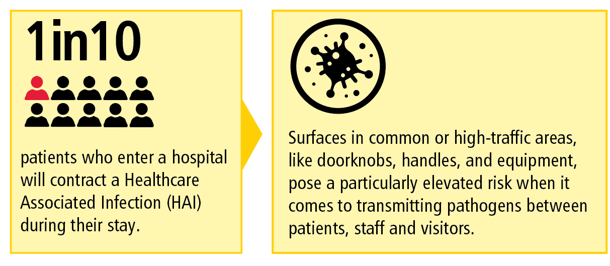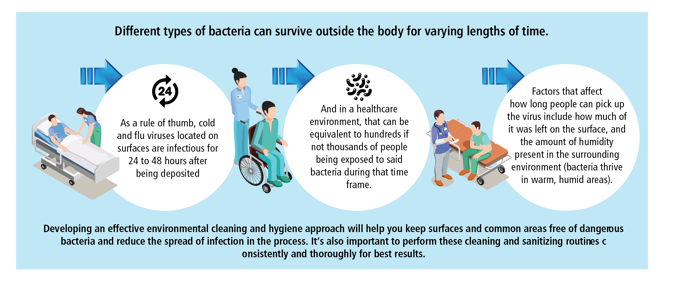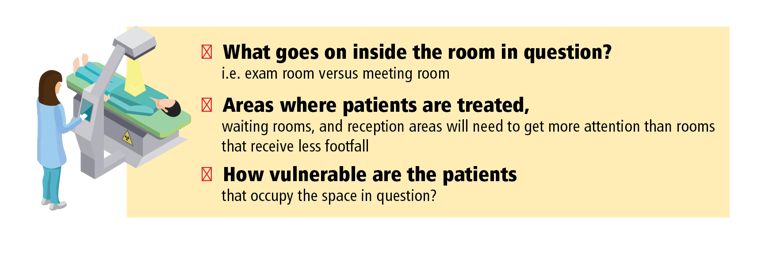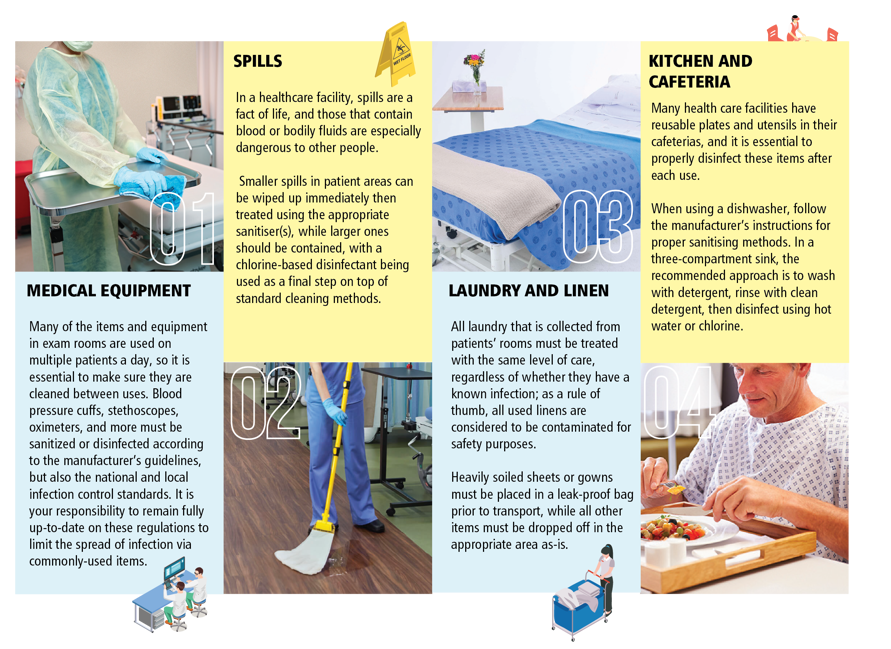Environmental cleaning is one of the most effective ways to maintain a safe and hygienic workplace in a healthcare setting. In hospitals and clinics, there is huge potential for contamination and the spread of illness due to how many patients pass through their doors every day.


Developing an effective environmental cleaning and hygiene approach will help you keep surfaces and common areas free of dangerous bacteria and reduce the spread of infection in the process. It's also important to perform these cleaning and sanitizing routines consistently and thoroughly for best results.
Establishing priorities
To begin, it's helpful to identify which surfaces and areas are most at risk of transmitting illnesses and bacteria between patients, staff, and others. Ask yourself the following questions to begin sorting different items and areas into high- and low-priority categories:
Is the surface high-touch (frequently comes into contact with people) or low-touch (rarely comes into contact with people)?
High-touch surfaces, like patient-facing equipment, doorknobs, and washroom fixtures, will need to be disinfected more frequently due to an elevated risk of deposit and infection

By answering these questions, you will be able to create a cleaning approach and schedule that prioritises areas at the highest risk of spreading infection.
Best practices for specific pathogens
Not all bacteria and viruses are created equal; some require a specific sanitiser or disinfectant to be neutralized successfully. Here are a few pathogens commonly found in a hospital or clinic environment, and the best environmental cleaning agents to stop them from spreading.
1. Norovirus: commonly known as "the flu," many common disinfectants are ineffective against norovirus. Instead, a simple mixture of bleach and water (5 to 25 tablespoons of household bleach per 3.78 litres of water) is recommended.
2. difficile: this pathogen cannot be killed using an alcohol solution. The use of soap and water is recommended (especially when it comes to washing hands, as this bacteria is spread via faeces particles), but a sporicidal agent is best.
3. Staphylococcus aureus: this antibiotic-resistant pathogen, commonly known as "staph," can survive on an external surface for weeks. Staph is best dealt with using a disinfectant or cleaning agent specifically formulated to kill this prolific bacteria.
Types of environmental cleaning
Maintaining a clean and hygienic environment is an effort that must be tackled from all angles. From patient-facing equipment to the main cafeteria, it's important to be aware of the factors and activities that require specific attention.
Employees or cleaning staff dealing with any of the following situations should wear gloves and/or masks if necessary to further prevent the spread of pathogens, bacteria, and infections. Hands should also be washed after handling anything that may be associated with an infection risk.

Know the basics to reduce the spread of infection
Asking the right questions and understanding the best environmental cleaning approaches for your situation are the bedrock of a hygienic environment. Given how quickly disease can spread through a hospital or clinic, it is everyone's responsibility to contribute to the fight against infection.